HOW CAN I GET MY KIDS TO EAT MORE VEGETABLES?
Definitely one of the most asked questions on my YT page. For sure.
I wish I had a magic wand and an easy solution that works for every child and makes them eat tons of veggies. Reality is that there is not a method or rule that will instantly transform your little ones in vegetable lovers.
Still, and that’s the reason why I’m here today, there are many things that you can daily and constantly do in order to:
- Increase the exposure of your kids to vegetables
- Have more chances that your little one will eat more veggies
I will share with you as many tips as I can so that you can try as many as you like and maybe find one or two or a combination of some that will work for your kids. Ready to start?
1. ADD VEGGIES TO THEIR FAVORITE FOOD.
I know, this is a bit sneaky, but it works. You are basically creating a bridge between their safe and accepted foods and the one they refuse: vegetables.
Let’s consider it a small change.
– PASTA. If your kid loves red pasta, prepare a tomato sauce with some broccoli in it or create a cheesy spinach green sauce. You can try pasta with broccoli, pasta with zucchini, pasta with veggie bolognese sauce.
– MEATBALLS. They love meatballs? Add grated zucchini to the mix or broccoli.
– MAC&CHEESE. Add a bag of mixed frozen veggies! Or carrots, cauliflower, butternut squash&kale.
– MUFFINS. What about carrot muffins or pink beet muffins?
– RICE. You can always mix rice with riced cauliflower.
And I can keep going with zucchini pancakes, banana and spinach popsicles, sweet potato chips, kale and spinach balls.
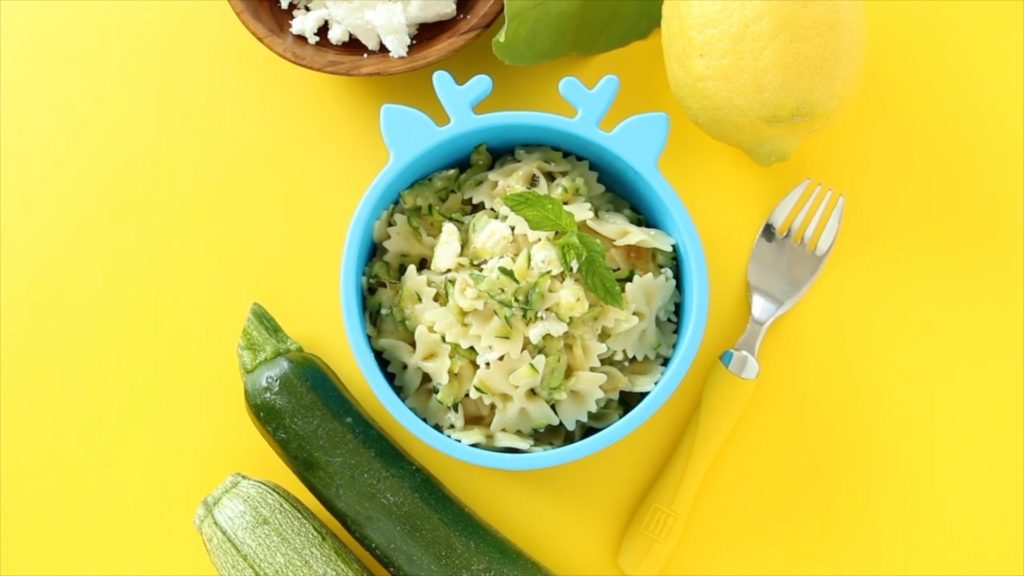
2. SPICE VEGETABLES UP
Adding spices and seasonings to veggies will make them more appetizing.
We love sweet potatoes with a sprinkle of cinnamon and nutmeg on top. Zucchini roasted with a tablespoon of Parmesan cheese on top. Green beans steamed with half a teaspoon of butter on top.
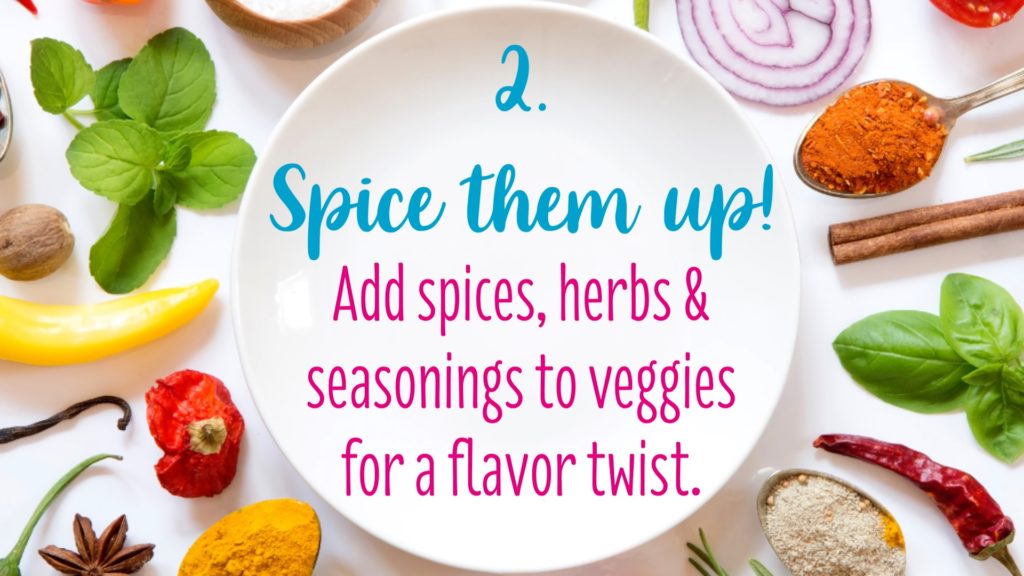
3. DIP IT!
Serve veggies with your kid’s favorite dip. They will use the veggie as a spoon. They don’t eat the veggie but only the dip. It’s fine. It helps them getting used and familiar with the veggie and…eventually they will take a bite!
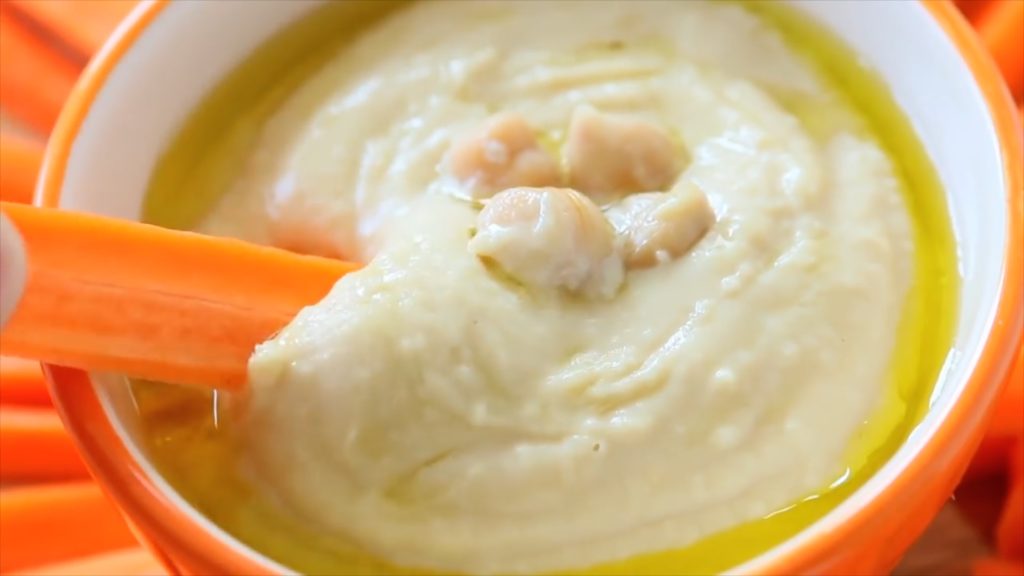
4. SMOOTHIE IT UP!
There is no limit to what you can add to a smoothie 🙂
Even the most disliked vegetable like kale can be lovely in a smoothie. The trick is to balance the measurements so that your kids’ favorite flavor is the dominant one. Example. You can prepare a totally chocolaty smoothie mixing banana, riced cauliflower, cocoa powder, chocolate chips, milk, applesauce, dates.
Or a more fruity one with carrots, celery, and apples and beets.
I prefer smoothies to juices as they keep the fiber in and that is useful to keep a regular bowel movement. You know what I mean 🙂
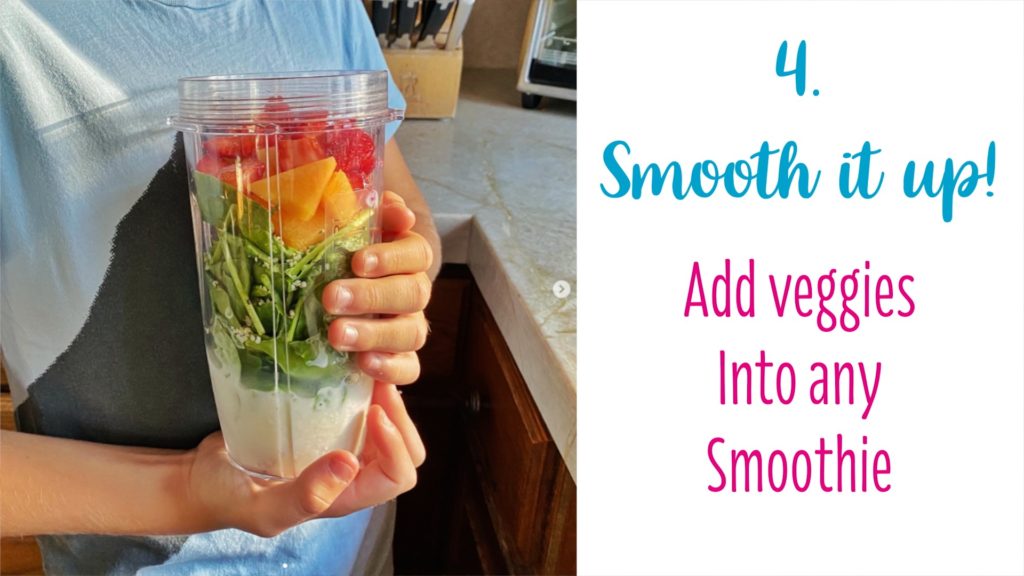
5. VEGETABLES FOR DESSERT?
Yep, because little ones have a soft spot for sweet foods. And adults too! Avocado cocoa dates pudding is such a decadent and delicious spread for a toast or just to enjoy by the spoon.
We also love our avocado brownies, but don’t forget the zucchini brownies.
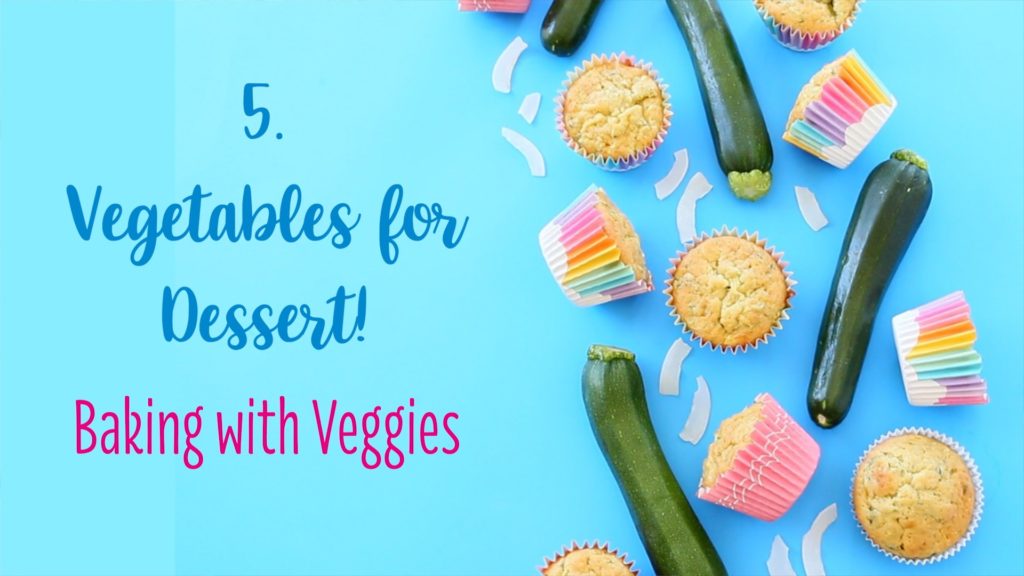
6. BREADED VEGGIES
If your toddler likes bread and crunchy food this idea might work.
You can bread almost any veggie. You can dip the veggie in either eggs or milk (any milk of your choice), then coat it with a bread mix (breadcrumbs, almond meal) and bake or pan fry.
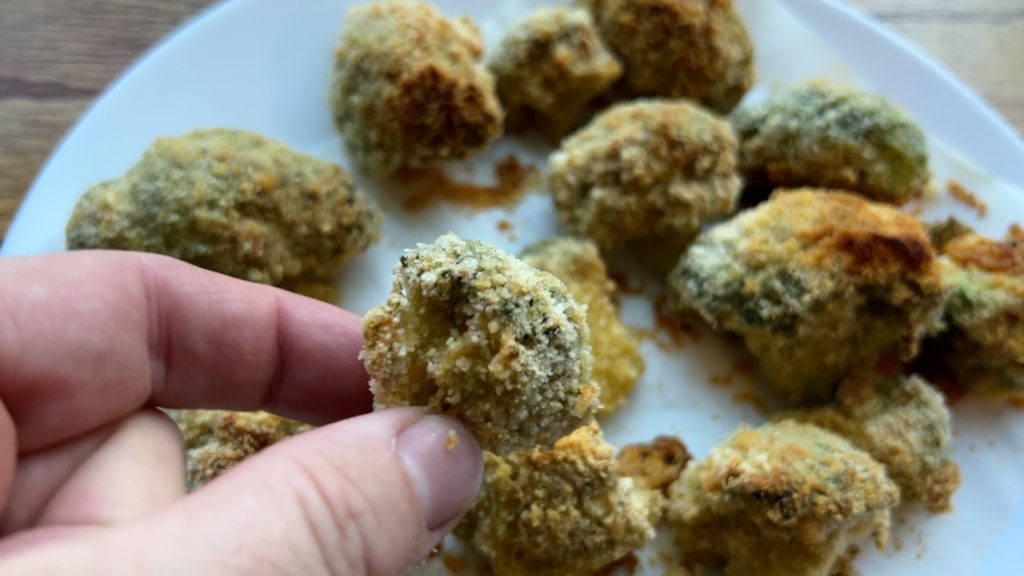
7. SURPRISE THEM WITH UNUSUAL COLORS
Sometimes offering the same vegetable in an unusual natural color is a real game changer. Purple or orange cauliflower instead of the white ones. Yellow tomatoes instead of red. Orange beet instead of purple. Rainbow carrots instead of orange ones. Yellow watermelon instead of pink one. Yellow zucchini instead of green ones. Purple cabbage instead of pale yellow. Gold berries instead of red.
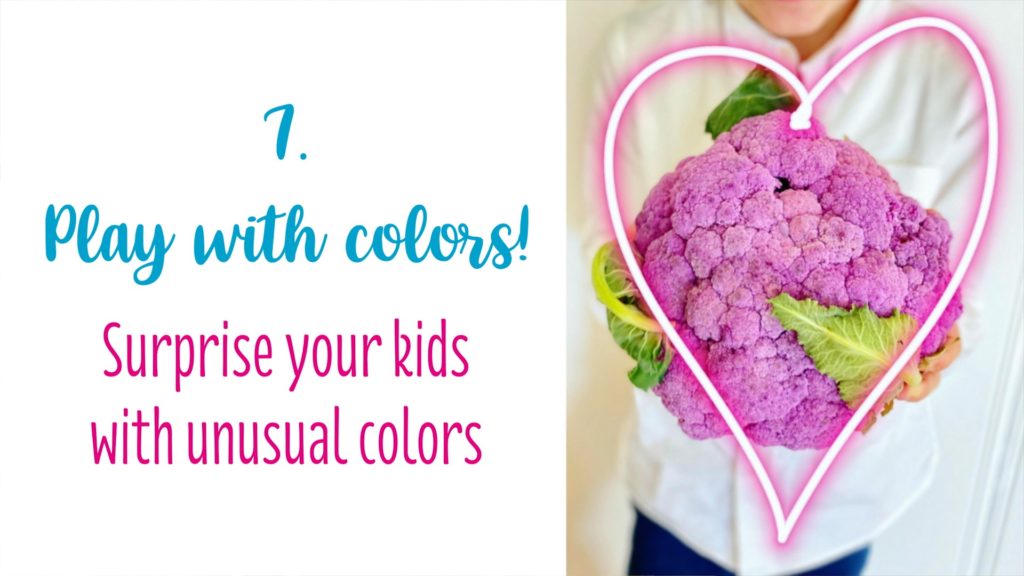
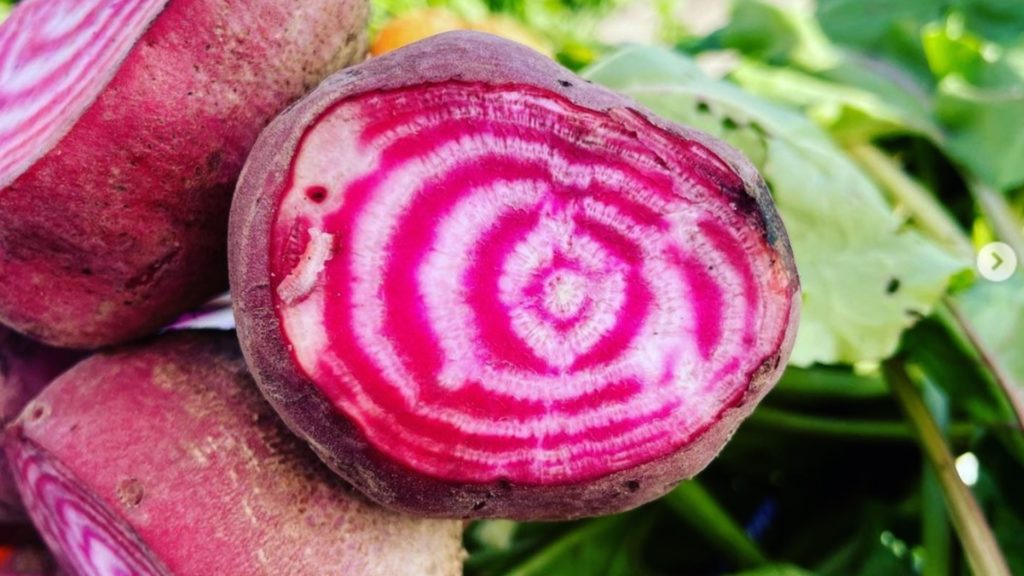
8. SERVE VEGGIES AT EVERY MEAL (or as often as you can).
Exposure is the key. The more your little one sees vegetables on the table, the higher chances are that he will try them. You can serve them as a side and in small quantity.
9. PLAY WITH VEGGIES!
Ok, I know. We have being raised with the concept “don’t play with your food” but what is the best way for kids to learn something? By playing! They have fun, they explore and they learn. The same concept can be applied to food and to vegetables. Your kid doesn’t like vegetables or you are introducing new ones to them? Let your toddler play with some veggies while you prepare the meal. Let them touch, smell, mash, break them.
I really want to introduce you to my friend Dani Lebovitz, MS, RDN, pediatric dietician behind kidfoodexplorers. She is an expert on this topic and author of so many children books about food exploration.
Kid Food Explorers is so much more than books and printable; Dani’s mission is to support families in raising healthy kids helping them develop a healthy and happy relationship with food. On her blog and Instagram page Dani shares so many useful information and activity ideas. Check her out!

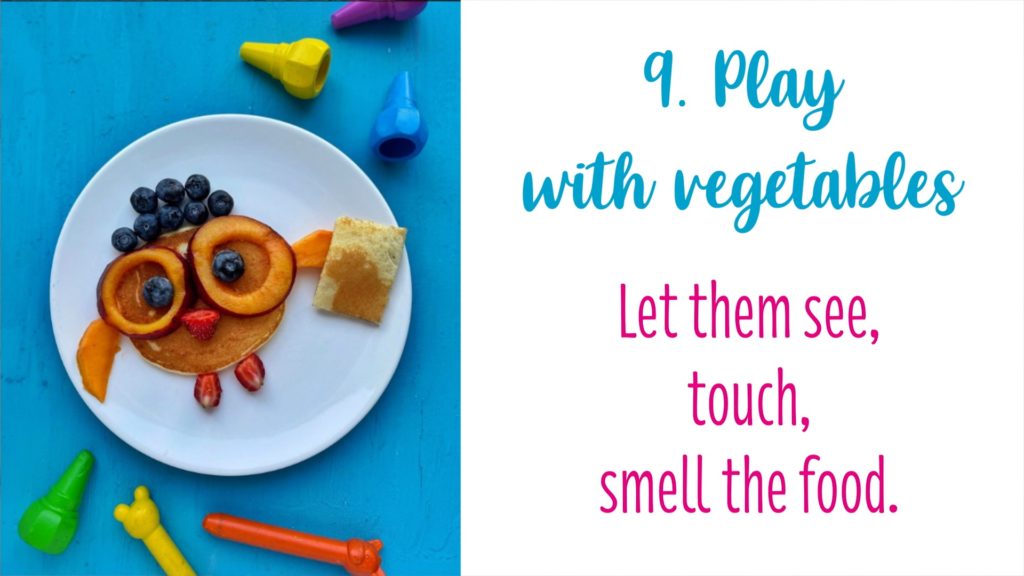
10. OFFER VEGGIES WHEN THEY ARE HUNGRY
My kids usually come home starving from school and when they were toddlers they used to starve right before dinner exactly when I was preparing it.
That’s the perfect time to serve a plate of raw veggies all together with some fruit.
11. THE FARMER’S MARKET IS FUN!
Whenever possible, take your little one with you when grocery shopping or when you go to the farmer’s market. I know that it will take more time and some extra patience, but showing your little ones where you buy veggies, how they look before you cook them, how brightly beautiful they are, it is an important part of making them accepting, liking and eating them.
And…if you have the opportunity to visit a farm or a friend’s vegetable garden or if you can grow a vegetable garden, that’s simply awesome. Eating something you planted and cared of is simply magic.
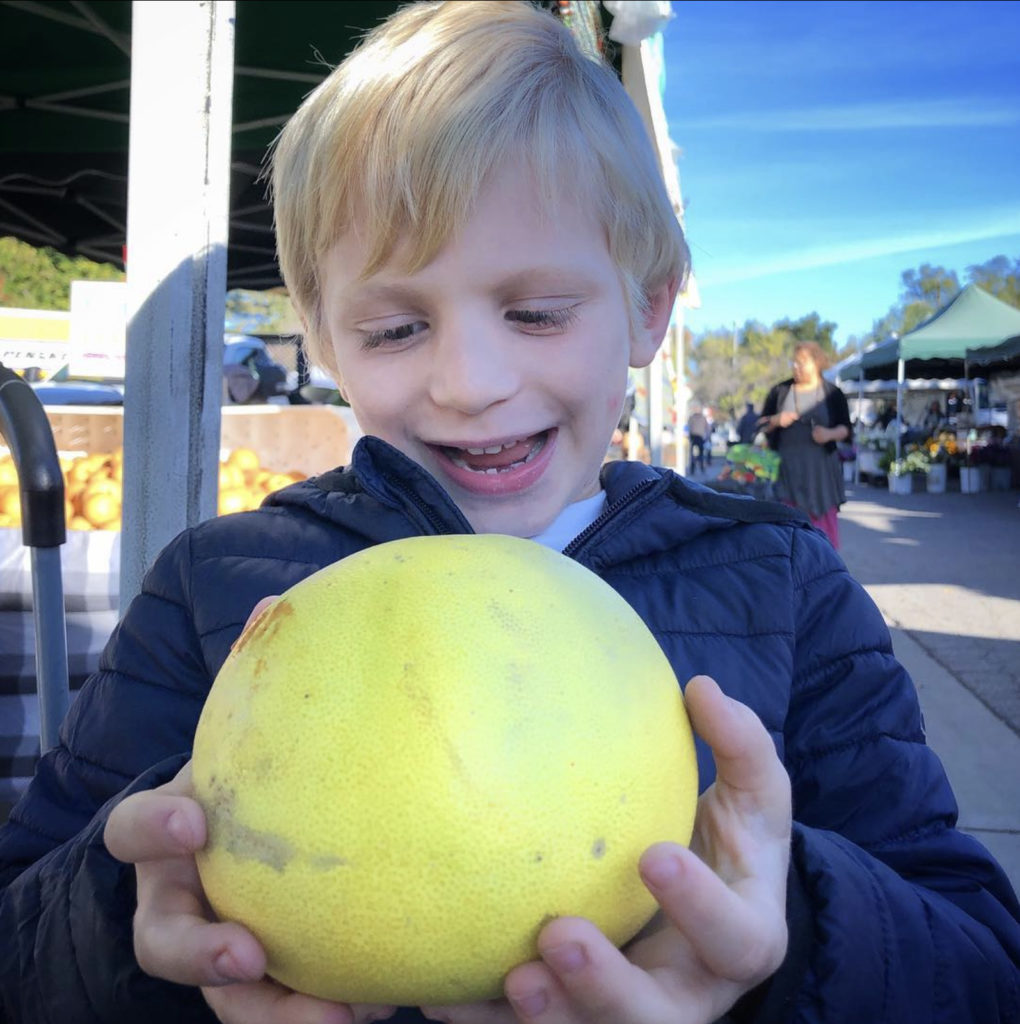
12. NO PRESSURE and KEEP CALM!
I know this is a though one to digest but reality is that the less pressure you will put on “eating vegetables” the better chances are your kids will eat them. Offer vegetables to your kids but don’t push nor comment negatively if they don’t eat them. They might do at the next meal. And of course no bribes. If you don’t stress out and keep calm, your kid will feel it and meal time will not become a drama.
13. SMALL QUANTITIES.
Chances that your toddlers will eat a whole head of broccoli the first time you offer to them are very very low. Start with a small piece, even a tiny one. That’s all it takes to open the acceptance door.
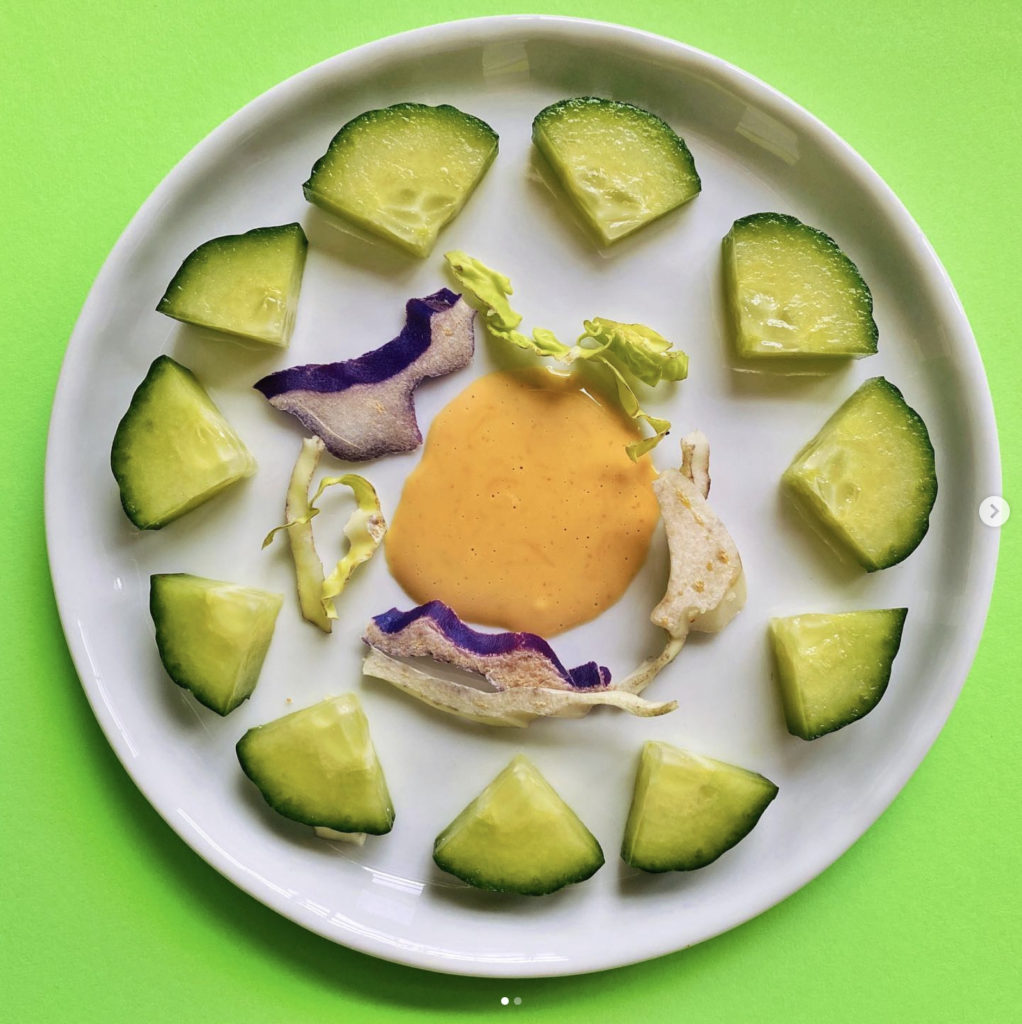
14. DON’T GIVE UP!
Your kids might not eat the veggies when you serve them, but that doesn’t mean you need to stop serving them. Research shows that kids need to try foods multiple times in order to develop a taste for it. Keep adding vegetables in your family meals as an habit and keep adding them in your little one’s plates too. Even a tiny piece counts as exposure. They might not eat them, they might ignore them, they might play with them. It’s all fine. Soon or later they might want to try and maybe enjoy them.
15. THE POWER OF CHOICE
Do you want two pieces of carrots or three? Display pizza toppings in small cups and let your toddler create their own pizza. Of course make sure to add veggies in the cups 🙂

16. BE THE MODEL.
What we do is more important of what we say. Kids look at us. If they see us regularly eating and enjoying veggies, they will think it’s ok and safe.
17. READ THEM BOOKS ABOUT VEGGIES.
The library is full of amazing books with veggies as characters or talking about veggies. Reading is a powerful way to create positive mental associations related to vegetables. On my blog I do have a whole Amazon List with all the titles I collected through the years.
My friend Dani @kidfoodexplorers it the author of many fun and interesting books for adventurous food explorers. Check out her library too!
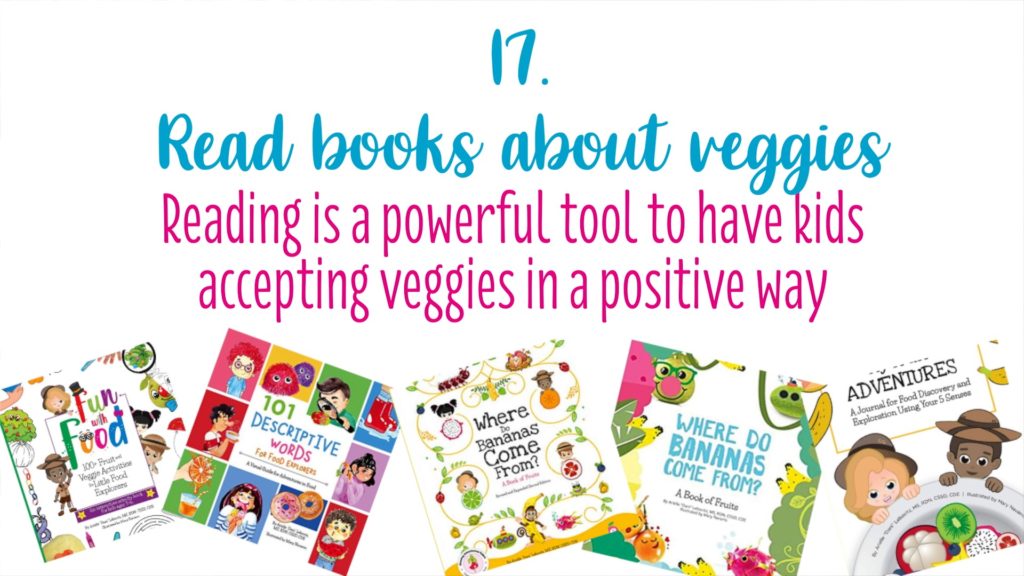
18. HIDING VEGGIES OR NOT?
This is an hot topic, I should have placed it at #1 🙂
Should I hide veggies so that kids don’t notice and get the proper nutrients or should I go clear and make them aware that they are eating vegetables so that they will voluntary accept them?
Well, there is no wrong here. My approach is a mix of the two.
I like to prepare “full view” vegetable recipes where the veggies are dominant, well recognizable and enjoyable (broccoli focaccia) . I like also to prepare recipes where vegetables are one of the ingredient and barely recognizable. (Zucchini meatballs).
Still, even if vegetables are not detectable in the recipes I never lie about their presence when asked. I do the opposite. For example when I serve the zucchini meatballs and the kids nicely eat them I simply drop the information casually “oh, I’m happy you like the zucchini meatballs. I think they are very soft and I like the tomato sauce all around them. What do you think?”
Or, when serving a green smoothie I ask. “Let’s make a guessing game. Which veggie gave the green color to this smoothie? I will give you three chances”.
The important thing is not to lose the trust of your kids. If you hide vegetables in your recipes and purposely not mention that you used them when asked or even deny that there are vegetables in the food served…it’s a short term strategy. Your toddlers might try the food once, but….They might not like it and they might simply refuse to try the recipe in the future, with or without vegetables. They might notice that there are some vegetables inside or they will grow up and understand that there are vegetables and also think that what you say is not true. You will lose their trust. There are so many other ways to make your kids eat vegetables and also liking and enjoying them.
WHAT IF THEY STILL DON’T EAT VEGGIES?
Let’s say that you tried all the 18 tips…and they simply didn’t work.
Well, it’s not the end of the world and it’s not worth your stress or anxiety. Creating an healthy, positive and fun relationship with food is more important than persuading your kids to eat vegetables at every cost. Reality is that kids can get tons of nutrients, the same ones, from fruit. Maybe not in the same amount (veggies simply rock), but still a good amount. To give you an idea. Dried apricots have double the amount of fiber than sweet potatoes. Kiwi has more Vitamin C than green peppers. To be clear. On papers veggies are better than fruits, but in reality, fruits your child actually eats provide better nutrition than veggies they don’t!
Now it’s your turn to share your best strategies to have the kids love vegetables.
Do you have other tips to share? Is there a strategy that has worked for your family? Let me know in the comments below.








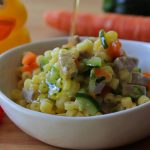
No Comments
Did you make this recipe? Share the love, tag @buonapappa on Instagram and hashtag it #buonapappa I would love to see your creations!